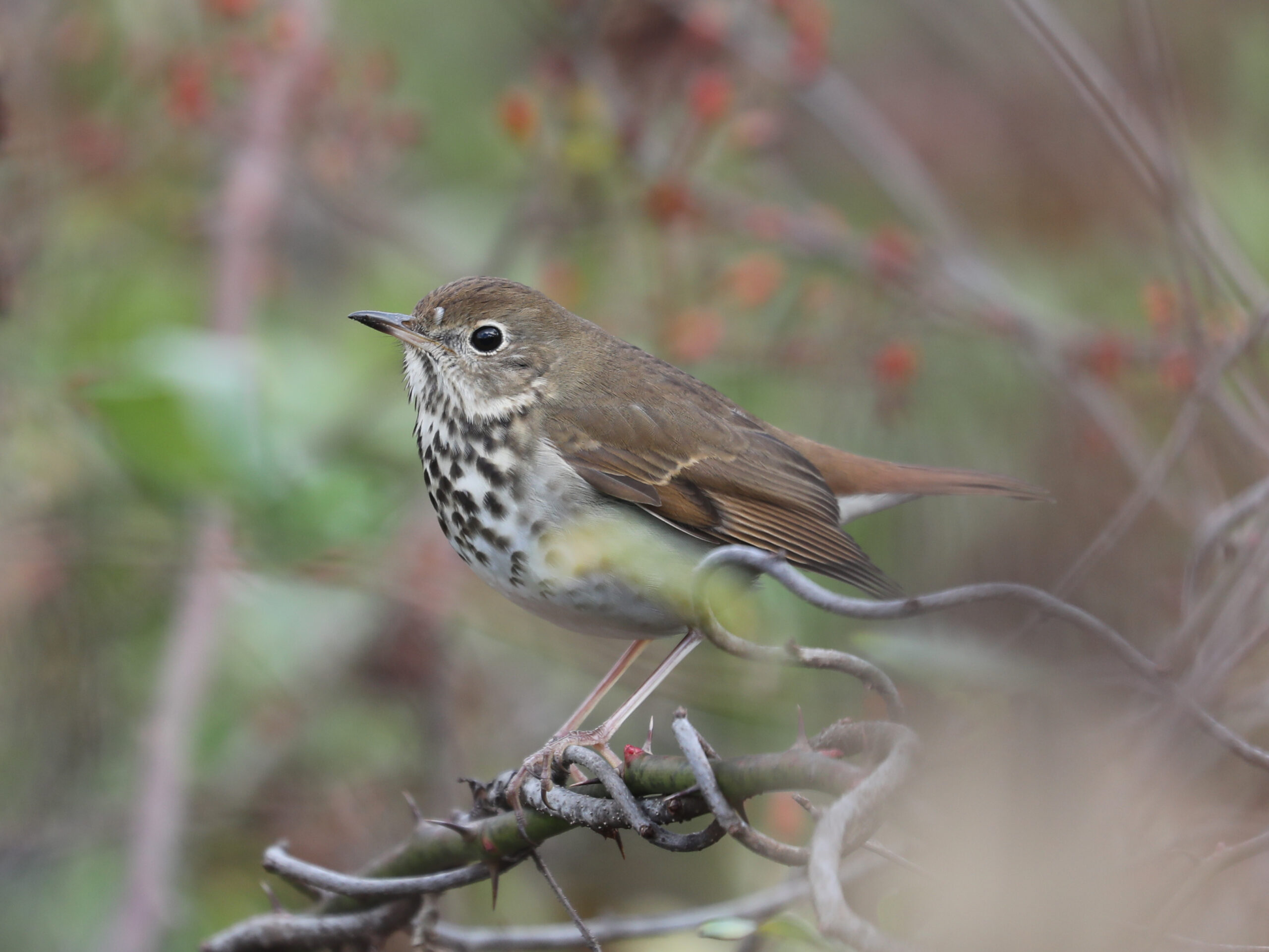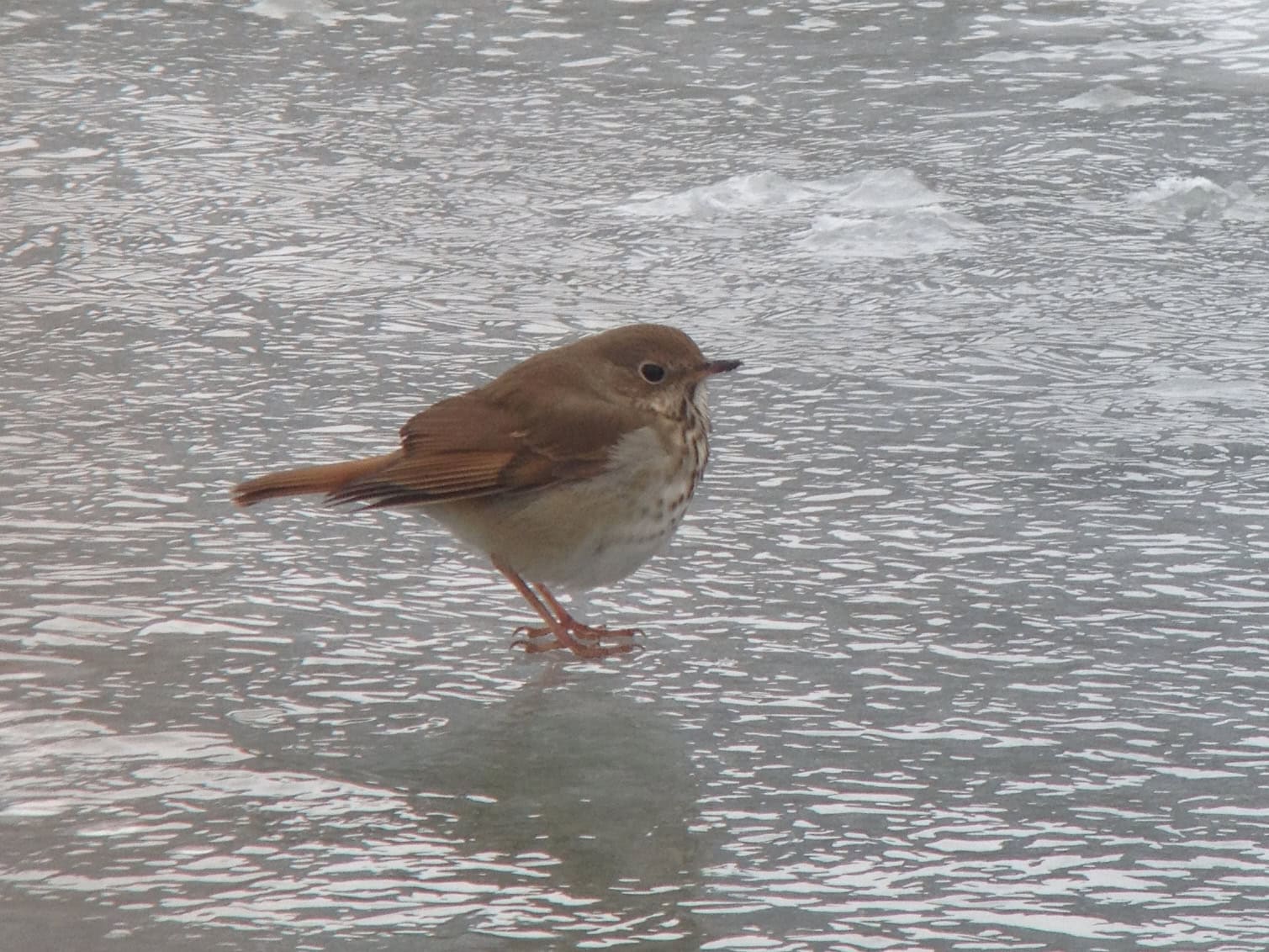Hermit Thrush
Almost everyone is familiar with Pennsylvania’s two most common species of thrushes, the American Robin and the Eastern Bluebird. There are actually six other species of thrushes in Pennsylvania, all of which are brown forest-dwelling birds with speckled breasts, like the Hermit Thrush I photographed last week.
Three of our brown thrushes are fairly common nesting birds in parts of Pennsylvania, including Hermit Thrush, Wood Thrush, and Veery. The Swainson’s Thrush is a rare breeder in northern parts of the state. The other two species, Gray-cheeked Thrush and Bicknell’s Thrush, nest far to the north, but can be found during spring and fall migration.
Most of our brown thrushes fly far to the south during the winter. The Hermit Thrush is the only species that sticks around all winter with the American Robins and Eastern Bluebirds. Hermit Thrushes are able to stay here by changing their diet with the season. During the summer, they eat insects and spiders, plus the occasional small snake or salamander. In winter, they eat a lot more fruit when their animal food is harder to find. Even though they eat fruit during the winter, evidence shows that they always prefer insects when they’re available.
Hermit Thrush
Almost everyone is familiar with Pennsylvania’s two most common species of thrushes, the American Robin and the Eastern Bluebird. There are actually six other species of thrushes in Pennsylvania, all of which are brown forest-dwelling birds with speckled breasts, like the Hermit Thrush I photographed last week.
Three of our brown thrushes are fairly common nesting birds in parts of Pennsylvania, including Hermit Thrush, Wood Thrush, and Veery. The Swainson’s Thrush is a rare breeder in northern parts of the state. The other two species, Gray-cheeked Thrush and Bicknell’s Thrush, nest far to the north, but can be found during spring and fall migration.
Most of our brown thrushes fly far to the south during the winter. The Hermit Thrush is the only species that sticks around all winter with the American Robins and Eastern Bluebirds. Hermit Thrushes are able to stay here by changing their diet with the season. During the summer, they eat insects and spiders, plus the occasional small snake or salamander. In winter, they eat a lot more fruit when their animal food is harder to find. Even though they eat fruit during the winter, evidence shows that they always prefer insects when they’re available.
About The Author
Dan Hinnebusch is the Ornithologist for Wild Birds Unlimited. Click to learn more.





